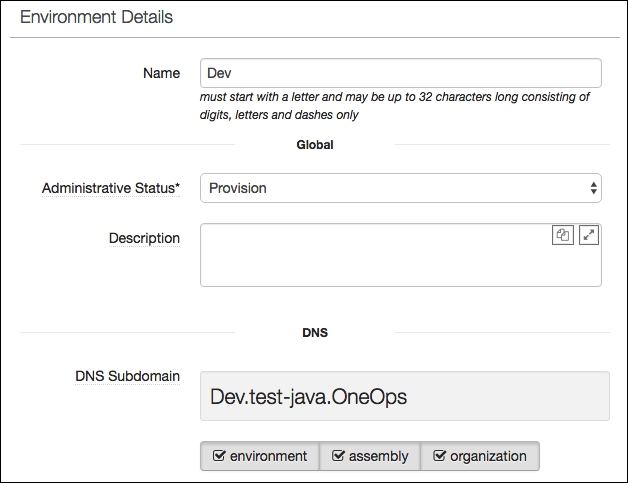Create an environment and deploy your assembly
An environment is an intersection of your assembly and a cloud. You will attach a cloud to your assembly to create an environment. As your assembly progresses through different environments, you can go on attaching either different or the same cloud with a different name to the assembly to deploy it. Thus, you will want to create descriptive names, which clearly state their purpose, such as development, QA, staging, production, and so on. Depending on how you deploy your assembly, the environment name also gets appended to the FQDN and will become part of how you address your server or call your app, so how you pick your environment name is crucial. Go ahead and click on Transition on the left-hand side and then click on New Environment on the screen. Let's call this environment Dev:

You can set the administrative status as Provision for now, which means your app is being provisioned. However, if you are confident that the deployment will go...

























































